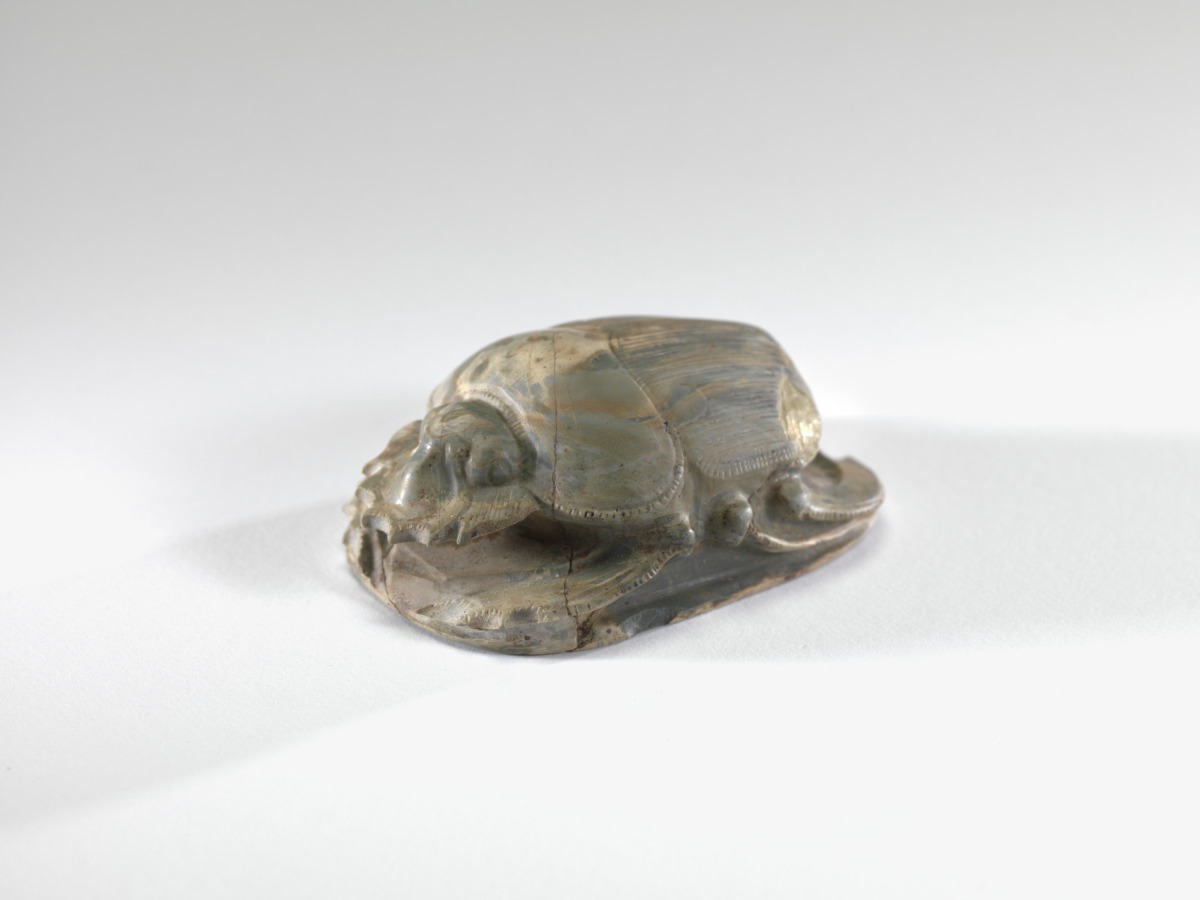
Heart Scarab (Primary Title)
Scarab (Alternate Title)
Unknown (Artist)
A heart scarab is a stone image of the scarab beetle (a symbol of resurrection) placed inside a mummy near the heart (the only organ left inside mummies). Most heart scarabs bore spells inscribed on the flat underside designed to prevent the heart from testifying against its owner when the heart was weighed (and judged) by the gods after death.
Although it is unclear whether the Egyptians considered a guilty heart to be heavier than a virtuous one, they invariably used a heavy stone for heart scarabs. This seems to imply that a virtuous heart was heavier-a heavy scarab might compensate for lack of virtue. This scarab is uninscribed, but its large size and material are typical for a heart scarab.
Some object records are not complete and do not reflect VMFA's full and current knowledge. VMFA makes routine updates as records are reviewed and enhanced.

